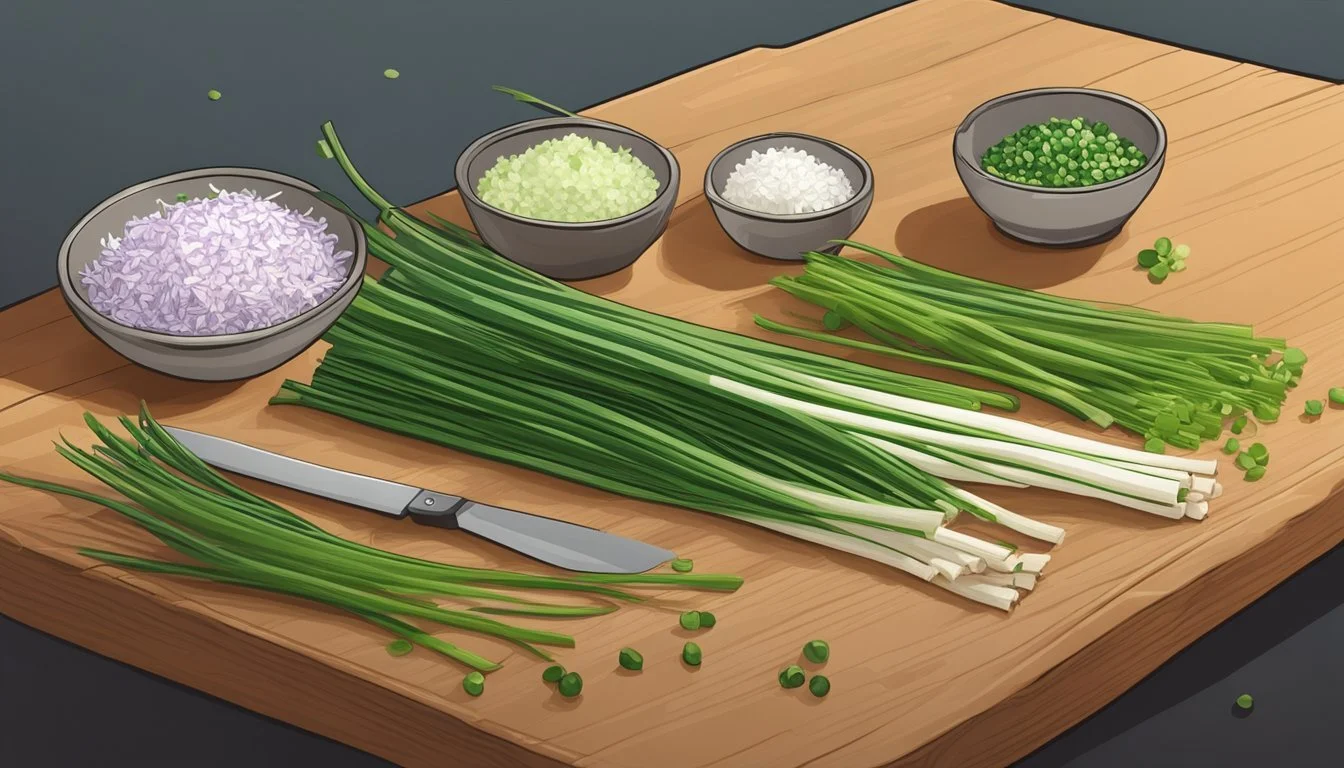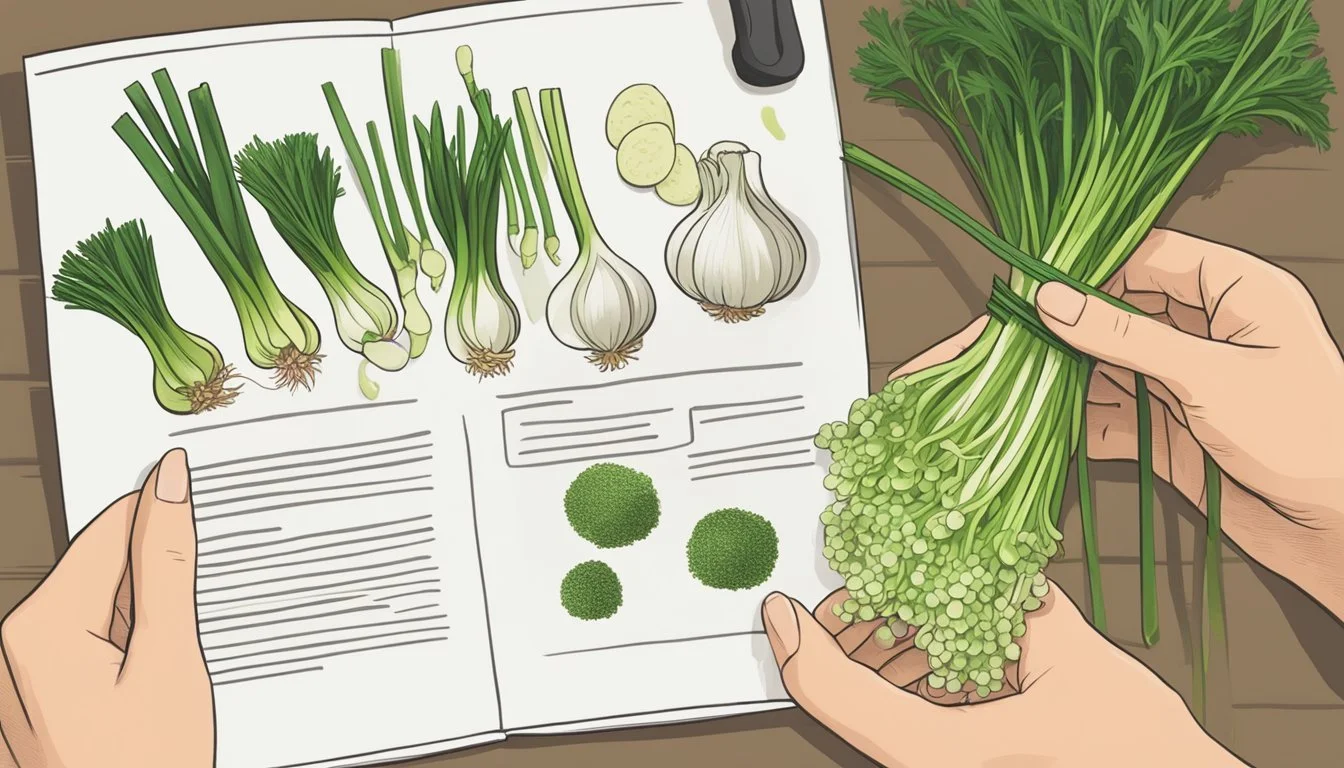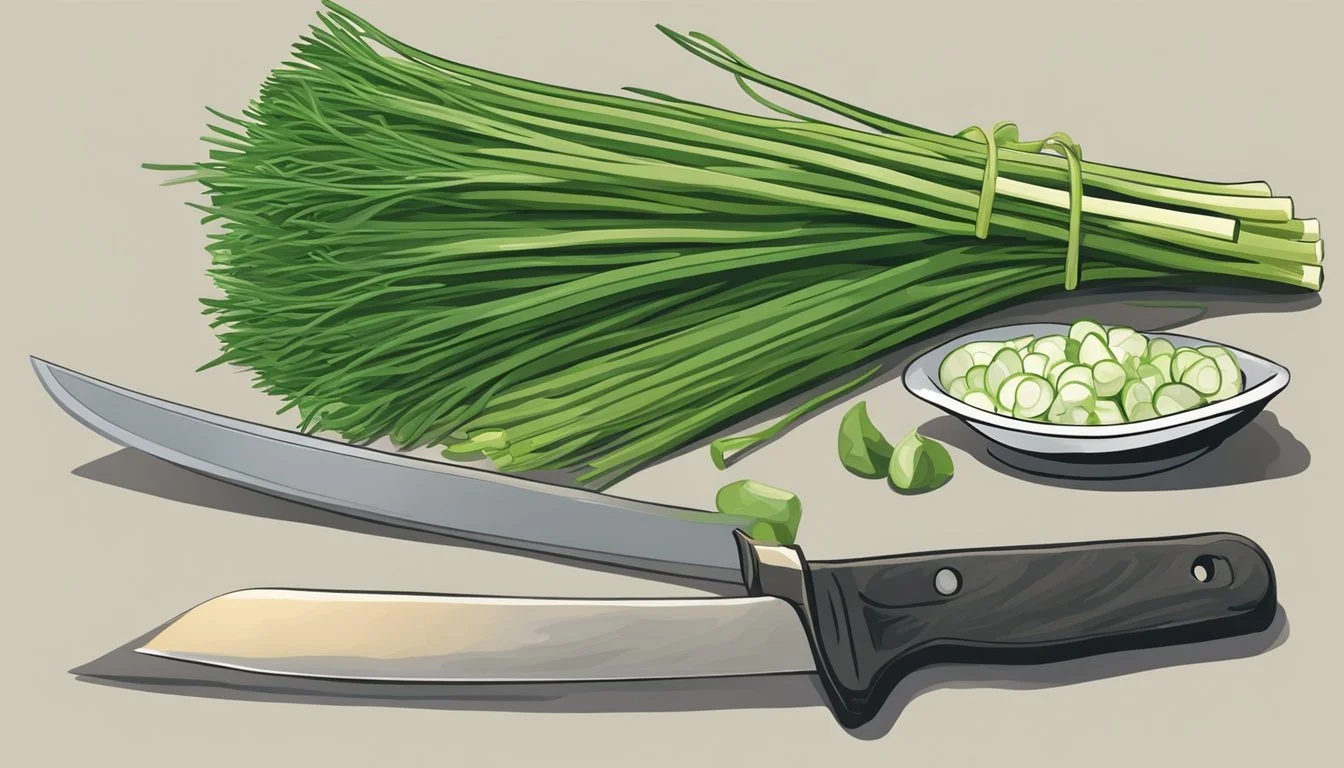How to Substitute Scallions for Chives
A Simple Guide for Flavorful Cooking
Scallions, also known as green onions, are a versatile ingredient often found in kitchens around the world. While distinct in their own right, they can function as an effective substitute for chives in many recipes. Both scallions and chives belong to the allium family, which also includes garlic, shallots, leeks, and various types of onions, giving them a similar flavor profile rooted in a balance between sweetness and a mild oniony bite.
When substituting scallions for chives, it's important to consider the intensity of the flavor. Chives tend to have a delicate and fresh taste, which is why they are frequently used as a garnish or added towards the end of the cooking process. Scallions, on the other hand, have a more pronounced onion flavor, especially the white base when compared to the green tops. The green parts of scallions resemble the taste of chives more closely but still convey a slightly stronger taste.
In cooking, one can substitute an equal amount of finely chopped scallion greens for chives to achieve a similar visual appeal and a compatible flavor note. While the pungent white section of scallions is preferable in cooked dishes, the green tops are excellent for garnishes and in lightly cooked or raw applications. This makes scallions a reliable alternative ingredient for chives in various preparations such as potato salads, omelets, and creamy dips.
Understanding the Basics
In the culinary world, understanding the flavor profile and characteristics of ingredients is crucial for successful substitution. Scallions and chives, both members of the Allium family, offer unique flavors and culinary uses.
Profile of Scallions
Scallions, also known as green onions or spring onions, are vegetables derived from various species within the Allium family. Unlike mature onions, scallions have long, tender green leaves with a white stem base that do not form a bulb. These characteristics make them identifiable in both appearance and culinary use.
Scientific name: Various species within the Allium genus
Flavor profile: Scallions possess a sharp, peppery flavor that is milder than mature onions but stronger than chives.
Culinary uses: Often used as a vegetable in a variety of dishes, including stir-fries and salads, as well as a garnish.
Profile of Chives
Chives are a perennial herb also belonging to the Allium genus. Their long, thin, and hollow green leaves present a delicate texture. Distinguished from other members of the onion family by both their physical form and their usage in cooking, chives bring a unique aspect to dishes.
Scientific name: Allium schoenoprasum
Flavor profile: They impart a subtle, mild onion flavor, which makes them a preferred herb for garnishing and adding a nuanced taste to meals.
Culinary uses: Commonly used fresh as a delicate garnish or flavor enhancer in soups, dips, and potato dishes.
Flavor Comparisons
Scallions and chives differ significantly in their flavor intensity and the impact they have on a dish's overall taste profile.
Intensity: Scallions present a bolder taste, while chives offer a more refined, delicate onion flavor.
Use in cooking: Scallions are versatile, often cooked as part of a recipe. In contrast, chives, due to their delicate nature, are typically used fresh and added towards the end of cooking or as a garnish to preserve their mild flavor.
Substitution: When substituting scallions for chives, one should consider that the stronger flavor of scallions might slightly alter the intended taste of the dish where mild chive flavor was expected.
Culinary Uses
In exploring culinary substitutions, it is important to understand the distinct uses both scallions and chives have in recipes. The substitution of scallions for chives can impact the flavor, texture, and presentation of a dish.
Common Uses for Scallions
Scallions, also known as green onions, are versatile in the kitchen. They are featured in an array of dishes, ranging from salads to soups and stews. The white base of scallions is often cooked to add depth to a dish's flavor profile, while the green stalks provide a bright, crisp garnish. Scallions are also commonly utilized in omelets, stir-fries, and dips, adding both a mild onion taste and a fresh visual appeal.
Example Dishes:
Scallion-infused salad dressings
Fresh salad mix-ins
Aromatic addition to Asian soups
Garnish for baked potatoes
Common Uses for Chives
Chives hold a more delicate position in the culinary world. They can be identified by their fine, hollow green stems that offer a gentle onion flavor. Chives are frequently used as a garnish due to their bright color and mild taste. They are a traditional topping for baked potatoes, a fresh addition to potato salads, and a subtle flavor enhancer in various dressings and dips.
Example Dishes:
Garnish for creamy soup
Component in herbed omelets
Sprinkled atop potato salad
Impact of Substitution
The substitution of scallions for chives can be done, but one should consider differing intensities in flavor and texture. Scallions deliver a stronger onion taste and a more pronounced crunch than chives. When they replace chives as a garnish, the visual aspect remains similar, though the flavor contribution will be more noticeable. For dressings or dishes where chives are cooked, such as in certain stews or soups, the substitution works quite seamlessly, and scallions can fulfill chives' role without compromising the dish's integrity.
Substitution Guidelines
When substituting scallions for chives, it's important to consider the balance between flavors and textures, as well as the proper quantities to achieve the intended taste. Here are the specific guidelines to follow for a successful substitution.
Considering Flavors and Textures
Chives have a delicate, herbaceous flavor that complements a wide array of dishes without overwhelming them. Scallions, on the other hand, offer a slightly more pronounced onion taste and a firmer texture. To maintain the unique flavor profile of a dish when substituting, one should use only the tender green parts of the scallions, as these parts most closely resemble the mild taste and soft texture of chives.
Recommended Quantities
To substitute scallions for chives in cooking, use the following ratio:
1 tablespoon chives = 1 tablespoon scallions (green parts only)
This one-to-one ratio maintains the balance within the dish, considering the slightly stronger flavor of scallions. Using the green parts also preserves the aesthetic appeal that chives typically provide.
Alternative Substitutes
If scallions are unavailable or if an individual seeks variety, other substitutes can be considered. Each offers its own unique properties:
Leeks: Similar to scallions but with a milder flavor. Use thinly sliced light green and white parts.
Shallots: Provide a subtle hint of garlic with a mild onion taste. They can be finely chopped for a balanced flavor.
Garlic Scapes: Offer a gentle garlic flavor; chop finely and use sparingly.
Ramps: Wild onions with a strong flavor; use less than what the recipe calls for with chives.
Tarragon: An herb with a completely different flavor profile; it can be an interesting alternative if an anise-like taste is desired.
Preparing Scallions as a Substitute
When substituting scallions for chives, it's important to recognize the subtle differences in flavor and texture, and to adjust your preparation technique accordingly to best suit your cooked dish.
Chopping Techniques
Scallions are usually divided into two main parts: the white base and the green stalks. The white part has a stronger onion flavor and is typically cooked, while the green part is milder and can be used fresh like chives.
White Base: Dice finely with a sharp knife to ensure they are small enough to mimic the delicate size of chives in cooked dishes like stir-fries.
Green Stalks: Use kitchen scissors to snip the green stalks into small rounds, resembling chives. They can be used raw as a garnish or lightly cooked.
Cooking Adjustments
While chives are often used raw, scallions may require a slight alteration in how they are incorporated into recipes.
Raw Dishes: When adding scallions to a dish that will be served raw or minimally heated, it's best to use only the green parts and to add them just before serving to maintain freshness.
Cooked Dishes: Incorporate the diced white base of scallions early in the cooking process, allowing them to soften and mellow in flavor, resembling the subtle taste of chives.
Remember, when scallions are used as substitutes for chives, one should consider the pungency of the white part and the desired final texture of the dish.
Additional Tips and Considerations
When substituting scallions for chives, one should consider aspects such as storage, nutritional content, and cultivation to preserve freshness and flavor while maintaining the health benefits associated with these vegetables.
Storing and Preservation
Proper storage of scallions is crucial to retain their freshness when used in place of chives. They should be stored in a plastic bag in the refrigerator's crisper drawer, where they can last for up to a week. Dried chives can serve as a substitute in some recipes, but the flavor will be less potent than fresh. To preserve scallions longer, individuals may freeze them in airtight containers or consider pickling for added shelf life.
Nutritional Comparison
Both scallions and chives belong to the Allium family, which includes the garlic plant and the Chinese leek, known for their antioxidants and health benefits. When comparing their nutritional profile, scallions provide slightly more Vitamin A and Vitamin C than chives. However, both are low in calories and contain beneficial compounds like allicin, which can promote heart health.
Growing at Home
For those wanting a constant supply of fresh substitutes for chives, growing scallions at home in a garden or container is quite feasible. They require full sun and well-drained soil. Scallions can also be grown from scraps by placing the roots in water until new green shoots appear, then planting them. Wild garlic is another alternative that can be cultivated in similar conditions for those looking for varied flavors in their dishes.
FAQs
This section provides definitive answers to common questions regarding the substitution of scallions for chives, offering clear guidance to enhance your culinary endeavors.
Addressing Common Queries
Can scallions be substituted for chives in recipes? Yes, scallions can serve as a substitute for chives, particularly in dishes that accommodate a slightly stronger onion taste.
What proportions should be used when substituting scallions for chives? For most recipes, one can replace chives with an equal amount of scallions. However, due to the stronger flavor profile, it may be wise to start with a slightly lower quantity and adjust to taste.
Are scallions and chives interchangeable in all cuisines? While both belong to the onion family and can often be used interchangeably, they are not identical. Their differences should be considered, particularly in delicate or flavor-specific cuisines.
What are the best tips for using scallions as a chive substitute?
Use only the green parts of scallions to more closely mimic the appearance and milder flavor of chives.
Begin with a conservative substitution ratio, especially in raw applications, and add more as needed.
In what types of recipes do scallions work best as a chive substitute? Scallions function well as a chive substitute in cooked dishes such as soups and stir-fries, where their more intense flavor can mellow, and in raw applications like salads and dips, with moderation.
What are some other substitutes for chives if scallions are not available? Other chive substitutes include garlic chives, leeks, and shallots, which provide varied intensities of the onion-like flavor suitable for different recipes.





